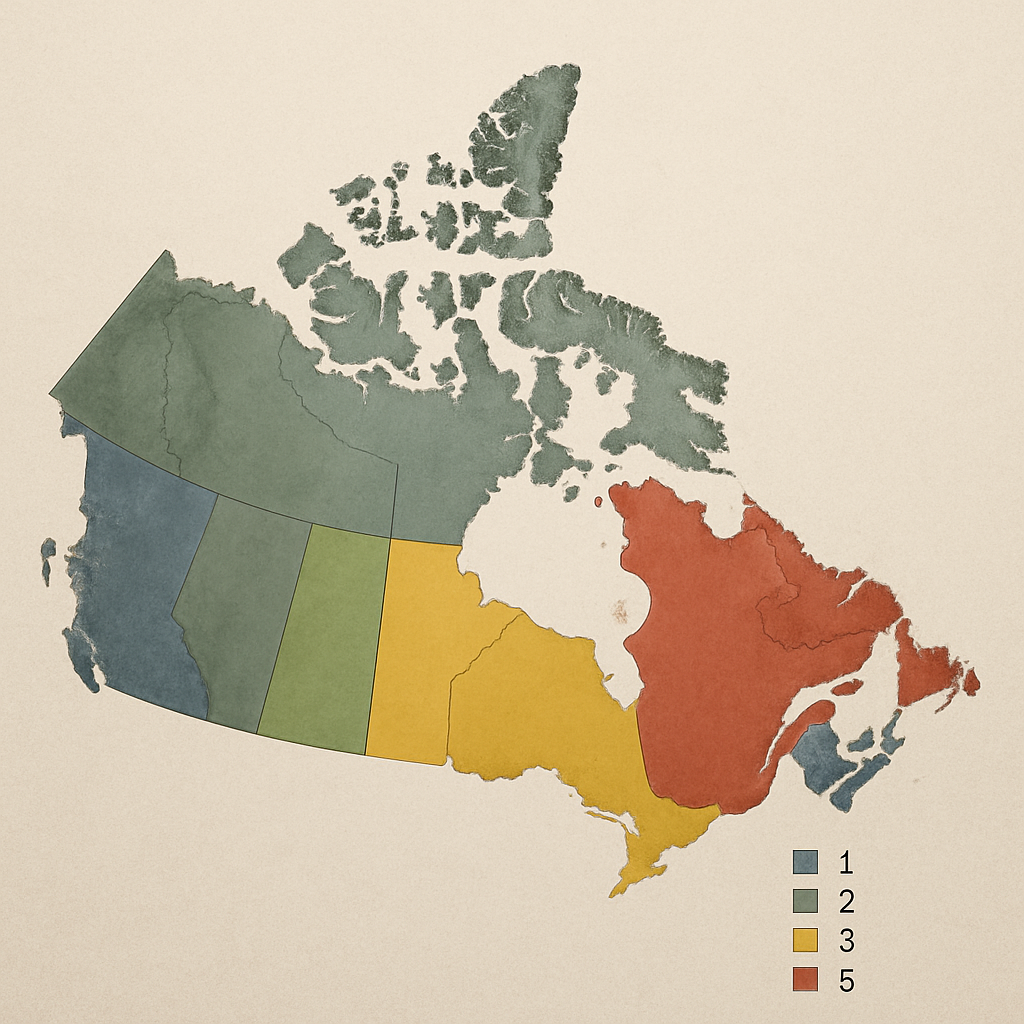
By Jenny Holly Hansen | WBN News | May 13, 2025
If you've ever glanced at a Canadian postal code — something like V3A 4R4 — and thought, this looks confusing, you're not alone. When I first started mailing out business documents across the country, I remember wondering why our postal codes seemed so random compared to the simple ZIP codes used in the United States.
The truth is, there's a lot of logic hidden behind what looks like a jumble of letters and numbers. Canadian postal codes are uniquely structured to meet the demands of one of the most geographically vast and sparsely populated countries in the world — and understanding how they work gives you a new appreciation for the system.
A Made-in-Canada Solution for a Big Country
When Canada’s postal system was modernized in the 1970s, the old method of sorting mail by hand couldn’t keep up with the growing volume. The solution was to create a system that computers could easily read and sort automatically — one that could work just as well for an apartment in downtown Toronto as it would for a fishing lodge in remote Nunavut.
That’s how we ended up with the six-character structure we know today: Letter-Number-Letter Number-Letter-Number.
Each part of the postal code has a specific meaning:
- The first letter represents a large geographic region. For example, V covers British Columbia, while M is used for Toronto.
- The first three characters (called the "Forward Sortation Area" or FSA) narrow it down to a city, town, or part of a city.
- The last three characters (called the "Local Delivery Unit" or LDU) identify a specific block, building, or even a single business address.
So even though it looks random at first glance, it’s actually an incredibly efficient coding system built for precision.
Why Letters and Numbers?
Canada opted to use both letters and numbers because it allowed for exponentially more unique combinations. With only numbers, like the U.S. ZIP system, you quickly run into limits — and with Canada's low-density population spread over a massive area, we needed the flexibility to define small and large delivery areas differently.
The mixed format also helps postal workers and machines spot errors. If someone accidentally switches a number for a letter (or vice versa), it’s immediately obvious that something’s wrong, reducing mistakes during sorting.
Some Fun Facts About Postal Codes
- The first postal code ever issued in Canada was K1A 0B1, assigned to the Ottawa headquarters of Canada Post.
- Rural areas often have broader codes, covering entire towns or regions, while urban codes can get as specific as one side of a single city block.
- Certain codes like H0H 0H0 are reserved for special purposes — in this case, letters to Santa Claus!
Final Thoughts
At first, Canadian postal codes might seem oddly structured compared to simpler systems elsewhere. But when you look closer, you realize they’re an incredibly smart solution to a uniquely Canadian challenge: delivering mail across a vast and varied landscape.
Every time I type out a postal code now, I can't help but admire the clever design behind those six little characters. It’s another quiet example of how Canada tends to solve big problems — not always in the most obvious way, but in a way that works.
Let’s Keep Talking:
Jenny is a business insurance broker with Waypoint Insurance. With 19 years experience, she will well versed in the technical aspects of business coverages.
She can be reached at 604-317-6755 or jholly-hansen@wbnn.news. Connect with Jenny on LinkedIn at https://www.linkedin.com/in/jenny-holly-hansen-365b691b/. Connect with Jenny at BlueSky: https://bsky.app/profile/jennyhollyhansen.bsky.social
Let’s Meet Up:
Jenny Holly Hansen is a cohost with Chris Sturges of the Langley Impact Networking Group. You are welcome to join us on Thursday’s from 4pm to 6pm at: Sidebar Bar and Grill: 100b - 20018 83A Avenue, Langley, BC V2Y 3R4
TAGS: #Jenny Holly Hansen #Canadian Postal Codes #Canada Post



